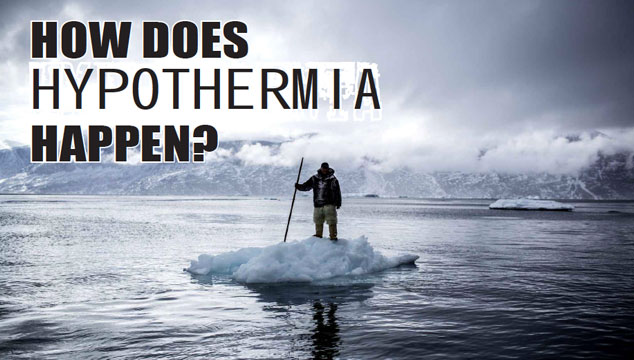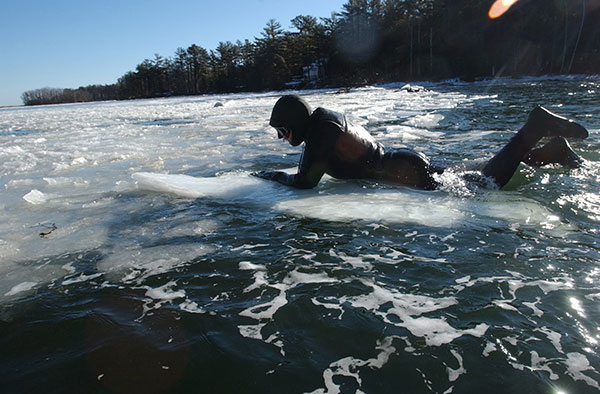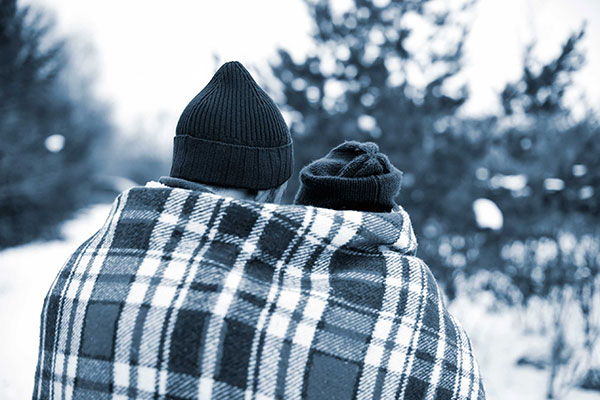
Winter is a dangerous time of year for many reasons. Driving on icy roads, slipping on ice, and of course, the cold weather itself are all extremely risky. Cold winter temperatures are notorious for causing hypothermia. This dangerous, life-threatening condition often sneaks up on a person so they don’t even realize their core body temperature is dropping to a risky level.
This article will explain hypothermia and hopefully be a resource for you. We’ll go over the condition, how it happens, the signs and symptoms, and what can be done to prevent yourself from falling victim.
What Is Hypothermia?
In a nutshell, Hypothermia is a drop in body temperature. A core body temperature that falls below 95 degrees is considered hypothermia. It can be fatal without immediate medical attention. This drop in temperature happens when a person’s body sheds more heat than it can absorb. Hypothermia happens when the body is unable to regulate its temperature due to outside circumstances. Very few cases are caused by a medical illness.
How Does Hypothermia Happen?
As mentioned above, hypothermia is generally caused by prolonged exposure to the cold. It’s important to realize that there doesn’t need to be snow or ice on the ground for to be too cold for prolonged exposure. Hypothermia can happen on a spring hike or a night out in the woods in the early fall.
Any time you aren’t protected from the elements there is an increased risk of developing hypothermia. This could be from skipping a coat, not wearing adequate footwear, or being wet in even merely cool temperatures.
Body heat is lost through the skin and especially the head. This is why a hat is so important when you’re outdoors in the winter. Body heat escapes when the skin is exposed. It can get to the point where the body no longer produces the heat needed for the metabolic process. It’s quite literally freezing to death.

Water is a leading cause of hypothermia. You can be in danger even if the air is only 60 degrees if you’re in a mountain run-off lake or stream. If the water temperatures is below 50 degrees, you’re at a serious risk of hypothermia. In fact, you only have about an hour of being submerged in temperatures of 50 degrees before hypothermia sets in. The colder the water, the less exposure your body can tolerate.
It is important to point out you can still get hypothermia in warm waters of 79 degrees. Your core body temperature will drop after prolonged exposure. Believe it or not, hypothermia can also happen in the summer! It could be something as simple as sitting in a room that’s very well air conditioned to the point it’s too cold. This is why it is so important to know the symptoms!
The body’s response to the cold is to protect itself. Blood flow is redirected from the skin to the major organs in an attempt to stay alive. The blood flow to the organs will slow and result in complete organ failure.
What are the Signs and Symptoms of Hypothermia?
The earliest signs are often ignored or completely overlooked. They can be very subtle and easily missed. Often times, it’s another person who recognizes the signs and has to inform the person suffering from hypothermia what is happening.
Some of the signs to know and pay attention to are as follows:
- Shivering is an initial sign to warn you the body is losing heat and doing what it can to generate heat by shaking. Know that if the shivering stops when still exposed to the cold, you’re in real danger.
- Extreme hunger is very common.
- You may also feel nauseous.
- Rapid breathing, even when you aren’t doing anything strenuous.
- Dizziness or feeling lightheaded.
- Inability to speak and articulate words clearly.
- Your fingers may feel uncoordinated. You may find you are stumbling more than usual.
- Your heart rate is fast.
These are the early signs. If you don’t get out of the cold, the following symptoms indicate a more severe case of hypothermia:
- Slurred speech.
- Blue lips and bluish fingertips are a serious warning sign. The skin will likely be very pale from the body diverting blood to the internal organs.
- Confusion, such as not knowing where you are.
- Drowsiness to the point you may have a strong desire to simply lay down and go to sleep.
- Weak pulse.
- Slow breathing.
- A feeling of resignation. You give up and don’t care. You lack the strength to go on.
The first sign of being cold is shivering. That has to be your warning sign it’s time to take action. The other signs may not be obvious and because your mental functions are going to slow, you may not remember or realize your rapid heart rate and ferocious hunger is the result of hypothermia.
How do you Prevent Hypothermia?
You don’t have to avoid being outside when it’s cold. Go enjoy the snow and spend time outdoors in the cold weather as long as you’re properly prepared. The main goal is to cover as much skin as possible. Wear a hat, gloves, and wool socks to help keep warm.

If you’re sweating, there may be temptation to shed your clothes. This is dangerous. Your skin is damp, which means the clothes will be damp. Wet clothes are going to chill your skin, whether you feel it at the moment or not. It’s also important to point out a person suffering from severe hypothermia may strip off their clothing out of confusion.
Wear moisture-wicking material to keep your skin as dry as possible. Avoid wearing cotton clothing. It stays wet and will hold the moisture against your skin. Wool is a great option.
Drink plenty of fluids, warm coffee, tea, and soup are all great choices. This helps keep your body warm and hydrated. Most importantly, prepare for the weather. Carry blankets in your car. Don’t go out into the cold without proper clothing. Even if you’re just running to the store, be sure to dress appropriately just in case!
